Thin marble countertops have become an increasingly popular choice for homeowners and designers alike, offering a modern, sleek aesthetic while preserving the timeless elegance of natural stone. These countertops are typically made from marble slabs that are thinner than the traditional 3 cm thickness, often ranging from 1 cm to 2 cm. The appeal of thin marble countertops lies in their minimalist look, reduced cost, and the versatility they bring to various design projects. However, despite their growing popularity, choosing thin marble requires careful consideration of factors such as durability, installation, and maintenance to ensure it meets both functional and aesthetic needs.
One of the primary advantages of thin marble countertops is their lightweight nature compared to thicker slabs. This makes them easier to handle, transport, and install, which can result in reduced labor costs. In addition, thin marble is often more affordable since it uses less material. For those looking to incorporate luxurious marble into their space without breaking the bank, thin slabs can be an ideal solution. The lightweight quality also allows thin marble countertops to be used in a variety of applications beyond traditional kitchen counters, such as backsplashes, bathroom vanities, or even furniture tops, offering flexibility in design.
Despite their benefits, thin marble countertops have certain limitations in terms of durability. Marble is a softer stone compared to granite or quartz, making it more prone to scratches, chips, and cracks, especially in thinner slabs. Thicker slabs provide more structural support, which is essential for areas that experience heavy use, such as kitchen countertops. To compensate for the lack of thickness, many installers reinforce thin marble countertops with backing materials like plywood or metal to improve strength and stability. This reinforcement is crucial to prevent sagging or breakage over time.
Another consideration with thin marble countertops is the edge profile. Since the material is thinner, it may require creative edge treatments to give the appearance of a thicker, more substantial slab. One common technique is the use of mitered edges, where the countertop edge is cut at a 45-degree angle and joined with another piece of marble to create the illusion of a thicker edge. This can give the countertop a more substantial look while maintaining the lightweight benefits of a thin slab. However, more intricate edge profiles may be more challenging to achieve with thin marble, and simple, straight edges are often preferred for a sleek, modern look.
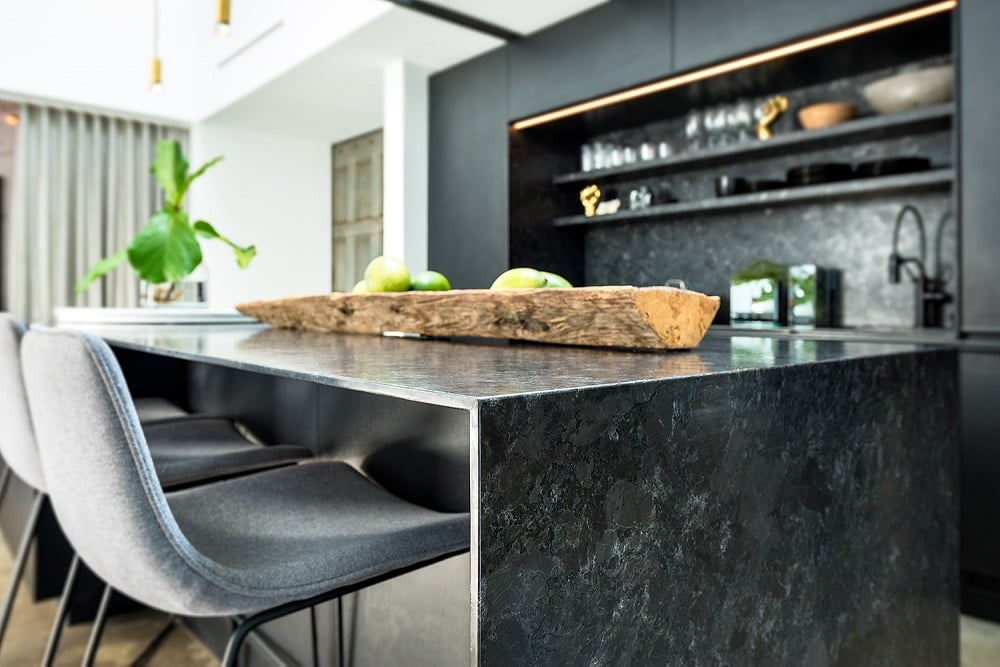
When choosing thin marble countertops, it’s also essential to consider the type of marble being used. Different types of marble vary in hardness, veining, and susceptibility to damage. Carrara marble, for example, is one of the more affordable and popular options due to its relatively low price and classic white-and-gray appearance. However, it’s softer and more prone to etching than other types like Calacatta or Statuario marble, which are more expensive but offer greater durability. Homeowners should carefully select the type of marble based on their budget, design preferences, and expected usage of the surface.
Thin marble countertops also require proper care and maintenance to ensure their longevity. Like all marble surfaces, thin slabs are porous and susceptible to staining from acidic substances such as wine, coffee, or citrus juice. Sealing the marble is essential to protect it from stains, but even with a good sealant, it’s important to clean up spills immediately to avoid damage. Regular sealing, depending on the level of use, is necessary to maintain the countertop’s protective layer. Additionally, using mild, pH-balanced cleaners and avoiding abrasive cleaning tools will help preserve the smooth finish and prevent scratches.
Another consideration for thin marble countertops is the potential for increased visibility of seams. With thinner slabs, the seams between pieces of marble can be more noticeable compared to thicker slabs. While skilled fabricators can minimize the appearance of seams, it’s something to keep in mind, particularly if you’re installing countertops in a large area that requires multiple pieces. For smaller surfaces, such as bathroom vanities or islands, seams may be less of an issue since fewer pieces are needed.
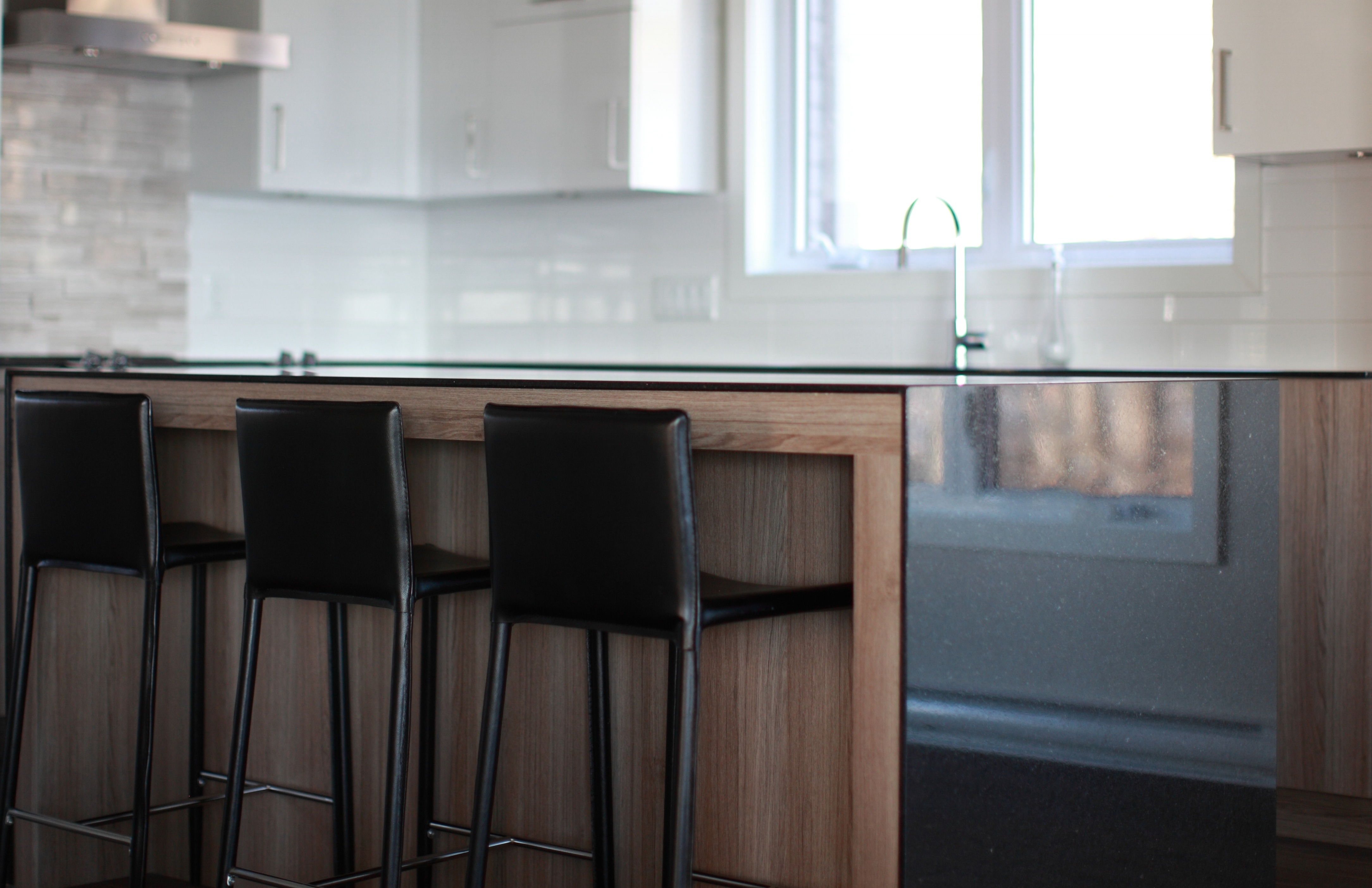
Thin marble countertops are particularly well-suited to modern and minimalist design aesthetics. Their slim profile creates a sleek, clean look that complements contemporary kitchens and bathrooms. In contrast to the bulkier appearance of thick countertops, thin marble offers a more refined and subtle elegance, making it a popular choice for designers looking to achieve a streamlined look. Pairing thin marble countertops with minimalist cabinetry, stainless steel fixtures, and neutral color palettes can create a sophisticated and harmonious space.
In commercial spaces, thin marble countertops are often used for their aesthetic appeal without the need for the durability of thicker slabs. In restaurants, boutiques, or hotels, thin marble can be utilized for counters, bar tops, or decorative surfaces where high impact or heavy use is not a primary concern. This allows designers to achieve the luxurious look of marble without the added expense or weight of thicker slabs. However, for high-traffic areas, extra caution should be taken to reinforce the countertops properly to prevent damage.
One way to incorporate the beauty of thin marble without the concern of durability in high-use areas is by using it as an accent. For example, thin marble can be used for backsplashes, islands, or as an accent in shower walls, where it doesn’t have to bear the brunt of daily wear and tear. This allows homeowners to enjoy the aesthetic qualities of marble without worrying as much about its susceptibility to damage. Combining marble accents with more durable countertop materials such as quartz or granite can create a balanced and practical design.
Sustainability is another reason some homeowners and designers are opting for thin marble countertops. Because they use less material, thin slabs reduce the demand for quarrying, which can have environmental impacts. Moreover, the reduced weight of thin marble slabs means less fuel is required for transportation, further reducing their environmental footprint. For eco-conscious homeowners, thin marble provides a way to incorporate natural stone into their home while minimizing resource consumption.
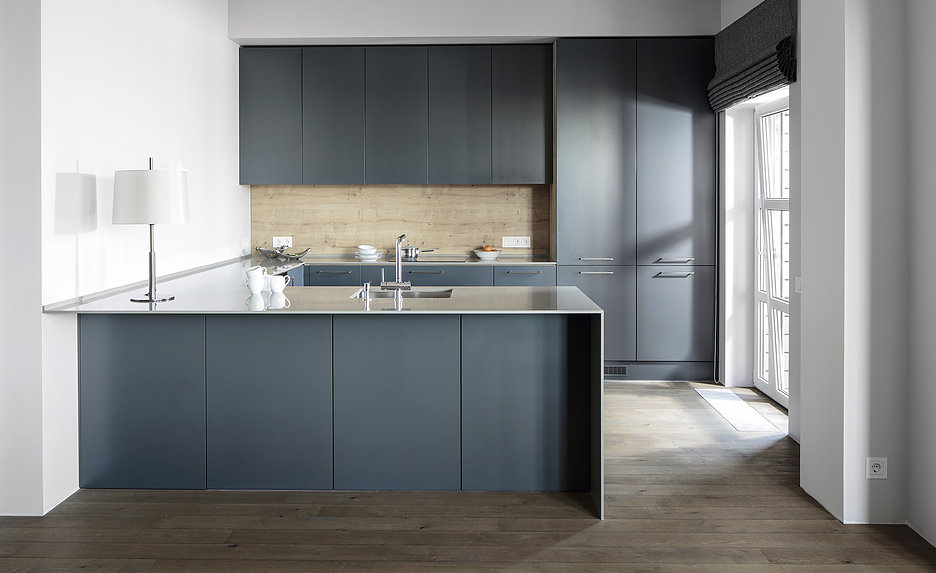
The cost of installing thin marble countertops varies depending on several factors, including the type of marble, the size of the space, and the complexity of the installation. While thin marble slabs are generally more affordable than thicker ones, additional costs may arise from the need for reinforcement or specialized installation techniques. It’s essential to get a comprehensive estimate from contractors that includes all potential costs, from the material itself to labor, reinforcement, and any additional design features like mitered edges.
One of the main concerns with thin marble countertops is their vulnerability to cracking during installation. Marble is inherently fragile, and thin slabs are more susceptible to breaking under stress or during transportation. Hiring experienced professionals who have worked with thin marble is critical to ensuring a successful installation. Proper support, careful handling, and using the right adhesive and reinforcement methods can prevent damage and ensure the countertops are securely installed.
For those considering thin marble countertops, it’s essential to weigh the pros and cons carefully. While the sleek, modern look and lower cost of thin slabs are appealing, the reduced durability and increased maintenance requirements may be a drawback for some homeowners. Ultimately, thin marble countertops are best suited for low-traffic areas, decorative purposes, or spaces where their aesthetic value outweighs concerns about durability.
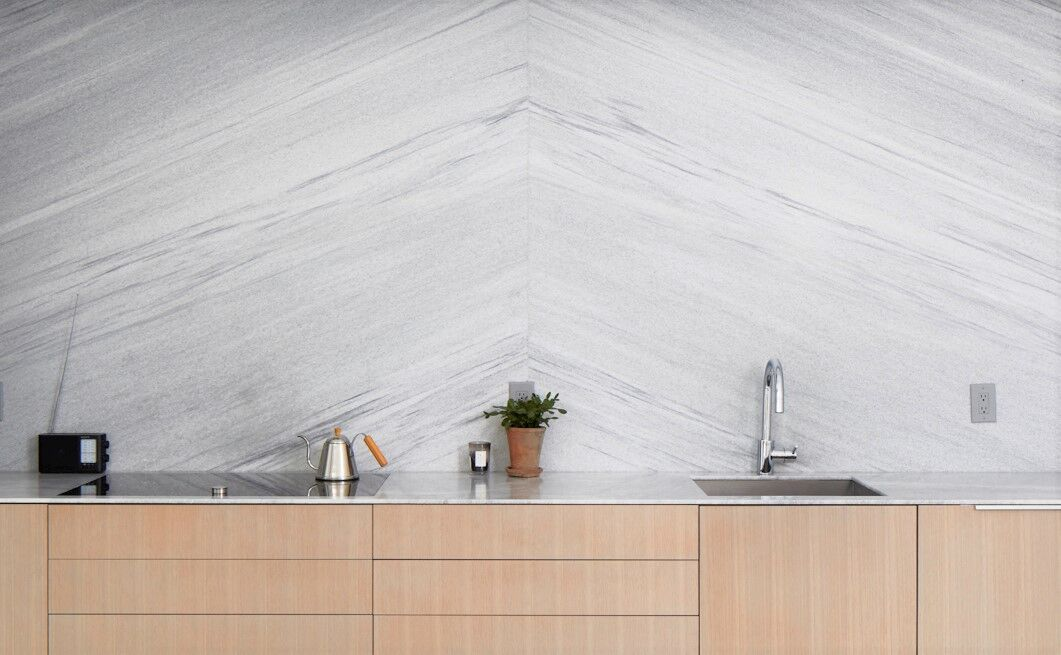
Common Mistakes to Avoid
Neglecting reinforcement: One of the most common mistakes homeowners make with thin marble countertops is failing to reinforce them properly. Without sufficient support, thin slabs can crack or sag over time, especially in areas where weight or pressure is applied frequently.
Overlooking sealing requirements: Marble, particularly thinner slabs, is porous and prone to staining if not properly sealed. Skipping or delaying the sealing process can lead to permanent stains or etching, compromising the look and longevity of the countertops.
Using harsh cleaners: Many people mistakenly use abrasive or acidic cleaners on marble countertops, which can damage the surface and make it more susceptible to etching and discoloration. Always use pH-neutral, non-abrasive cleaners to maintain the integrity of the marble.
Mismatched usage expectations: Thin marble countertops are not as durable as thicker slabs, and homeowners sometimes expect them to perform like more robust materials. Overuse in high-traffic areas without proper care or reinforcement can lead to disappointment.
Improper handling during installation: Due to the fragility of thin marble, improper handling during transportation or installation can lead to cracks or damage. Hiring inexperienced contractors who are not familiar with thin marble can result in costly mistakes.
Choosing the wrong marble type: Different types of marble have varying levels of hardness and durability. Opting for a softer marble in a high-use area can lead to premature wear and tear. It’s important to select a marble that fits both your aesthetic and practical needs.
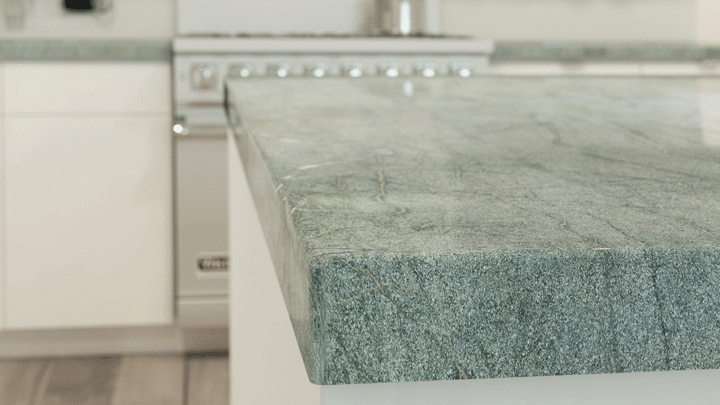
Is thin marble durable enough for kitchen countertops?
Thin marble can be used in kitchens, but it’s not as durable as thicker slabs. Since marble is a soft stone, thinner slabs are more prone to cracking or chipping under heavy use. To improve durability, thin marble countertops should be reinforced with materials like plywood or metal. However, in high-traffic kitchens, homeowners might want to consider thicker slabs or other materials that are less likely to suffer damage over time.
How do I maintain thin marble countertops?
Maintaining thin marble countertops requires regular cleaning with mild, non-abrasive cleaners and prompt removal of spills to prevent staining. Sealing the marble every 6 to 12 months is essential to protect the surface from moisture and acidic substances. It’s also important to avoid cutting directly on the countertop or placing hot pots and pans on it, as these actions can damage the marble.
Can thin marble be used in bathroom settings?
Yes, thin marble is an excellent option for bathrooms, where the countertops generally experience less wear and tear compared to kitchens. In bathrooms, thin marble can be used for vanities, backsplashes, and shower walls, where it brings a luxurious and elegant look. With proper sealing and care, thin marble can hold up well in bathroom environments and provide long-lasting beauty.
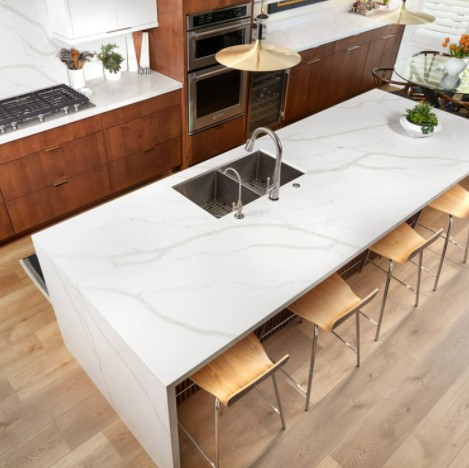
How much does it cost to install thin marble countertops?
The cost of installing thin marble countertops varies depending on the type of marble, the size of the space, and the complexity of the installation. On average, thin marble slabs can be more affordable than thicker ones, but additional costs may arise from the need for reinforcement or specialized installation techniques. For a standard kitchen, prices can range from $50 to $150 per square foot, including material and labor.
What are the pros and cons of thin marble countertops?
The main advantages of thin marble countertops are their sleek, modern appearance, affordability, and versatility in design. They’re lightweight, making them easier to install, and they use less material, which can reduce costs. However, thin marble is more prone to damage, including cracks, chips, and etching, and requires careful maintenance. It also needs reinforcement for stability, which can add to installation costs.
Can I install thin marble countertops myself?
Installing thin marble countertops is not recommended as a DIY project due to the fragility of the material. Marble is prone to cracking or breaking during transportation and installation if not handled correctly. Professionals are trained to reinforce thin marble slabs properly and ensure a secure installation, which is crucial for the longevity and appearance of the countertops. Hiring experienced installers is the best way to avoid costly mistakes.
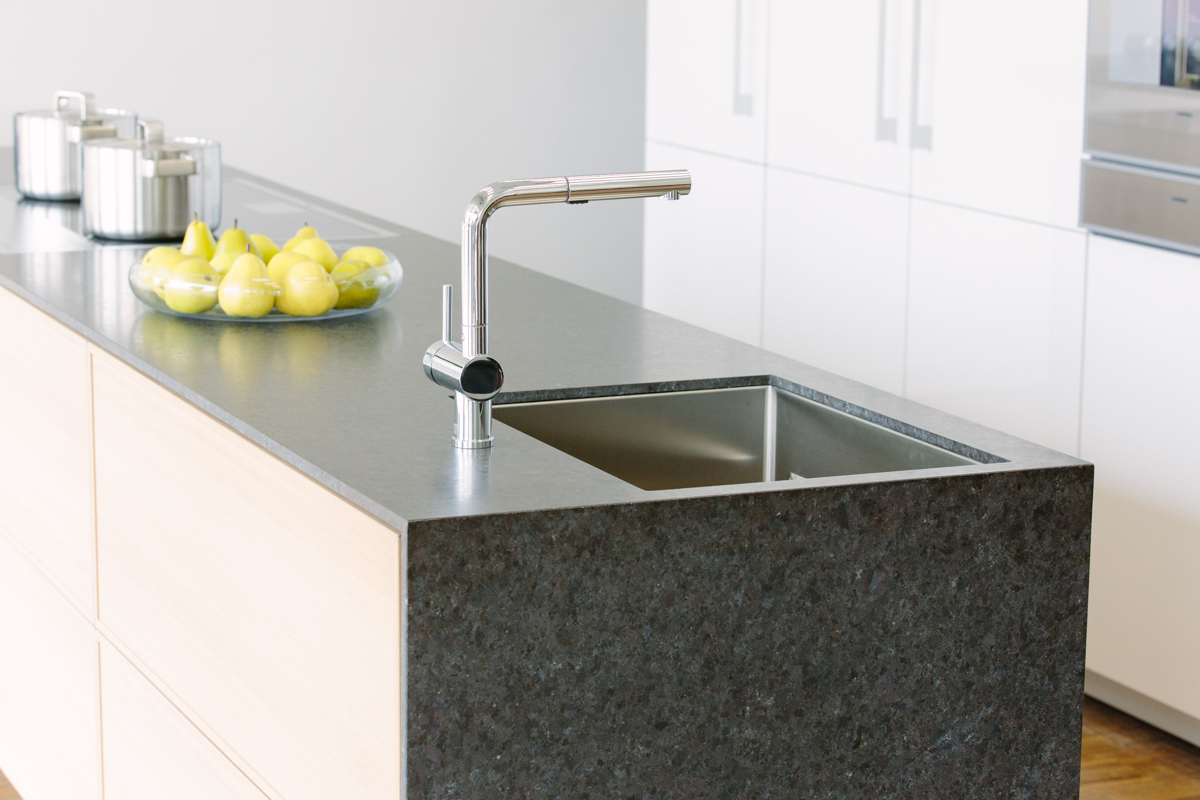
Related articles:
- DIY Refinishing Cultured Marble Countertops
- Marble Countertops In Bathrooms
- Cultured Marble Countertops
- Gray Kitchen Cabinets Marble Countertops
- Modern Kitchen Marble Countertops
- Refinish Cultured Marble Countertop
- Carrara Marble Countertops Bathroom
- Marble Countertops Types
- How To Refinish Marble Countertops
- White Gray Marble Countertops